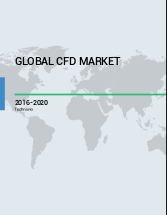

Enjoy complimentary customisation on priority with our Enterprise License!
PART 01: Executive summary
PART 02: Scope of the report
PART 03: Market research methodology
PART 04: Introduction
PART 05: PLM overview
PART 06: Role of PLM in product development
PART 07: CAE overview
PART 08: Market landscape
PART 09: Geographic segmentation
PART 10: Buying criteria
PART 11: Key leading countries
PART 12: Market drivers
PART 13: Impact of drivers
PART 14: Market challenges
PART 15: Impact of drivers and challenges
PART 16: Market trends
PART 17: Five force analysis
PART 18: Vendor landscape
PART 19: Appendix
PART 20: Explore Technavio
Research Framework
Technavio presents a detailed picture of the market by way of study, synthesis, and summation of data from multiple sources. The analysts have presented the various facets of the market with a particular focus on identifying the key industry influencers. The data thus presented is comprehensive, reliable, and the result of extensive research, both primary and secondary.

Primary sources
Secondary sources


Data Synthesis
Data Validation


Qualitative
Quantitative
![]() Get the report (PDF) sent to your email within minutes.
Get the report (PDF) sent to your email within minutes.
Complimentary full Excel data with your report purchase.
Get lifetime access to our
Technavio Insights
Quick Report Overview:
Quick Report Overview:
Cookie Policy
The Site uses cookies to record users' preferences in relation to the functionality of accessibility. We, our Affiliates, and our Vendors may store and access cookies on a device, and process personal data including unique identifiers sent by a device, to personalise content, tailor, and report on advertising and to analyse our traffic. By clicking “I’m fine with this”, you are allowing the use of these cookies. Please refer to the help guide of your browser for further information on cookies, including how to disable them. Review our Privacy & Cookie Notice.